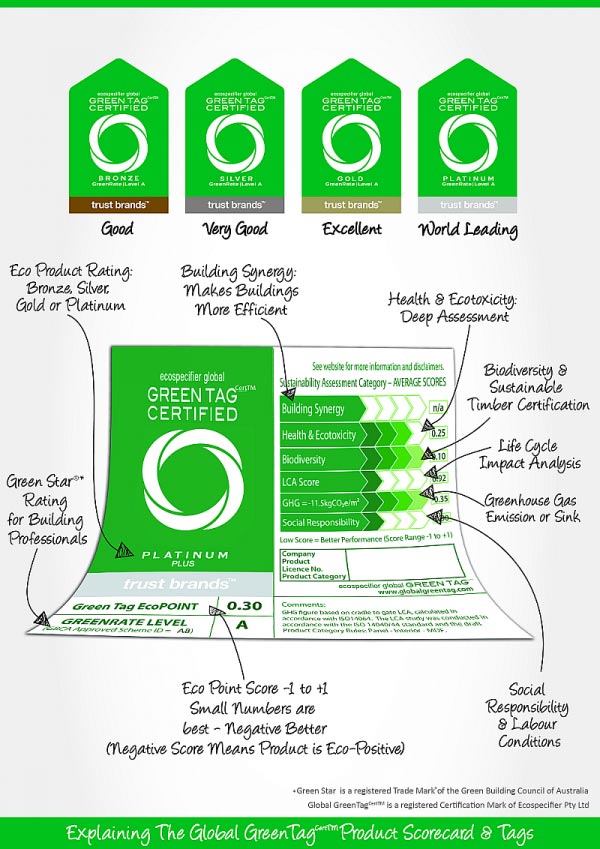Chemicals emitted from products, inhaled or absorbed through the skin, can have a major influence on the health of your family. David Baggs of Global GreenTag Pty Ltd deals with the common issues and compounds that can affect family and even pet health, how to avoid the problems and how and where to find healthy products.
What are the main issues and what to do about them?
VOCs
Most product information focuses only on 'Volatile Organic Compounds' (VOCs) and cancer-causing chemicals like formaldehyde. While VOCs are indeed insidious, some smell attractive, but some you can't smell at all. Sweet, unpleasant or strong smells are typically dangerous compounds emitted from products like synthetic rubber (SBR) backed carpets and SBR underlays, flooring, glues, sealers, paints and lacquers, waterproofing agents and the like. Some VOCs continue off-gassing for years, even if the material passes the 'sniff test'.
Formaldehyde
Formaldehyde is a special VOC because it is recognised to cause cancer, but also because there is a mandatory testing and rating system. The Australian system is the 'E' rating. The minimum is E1, and for laminates, veneers and melamine surfaces may be the best you can find. But for other products you should insist on E0 or better still E00 grade (approximates the natural level of formaldehyde in raw wood). All composite wood products emit some formaldehyde from the glue. Anything that is waterproof, like structural or exterior grade products, will be E0 or better by definition. Always check the 'E' rating before you buy or specify - it should not cost any more.
Other VOCs and compounds (below) can only be checked by your own research based on manufacturer supplied information, or by relying on independent certification.
Endocrine disruptors
A variety of chemicals in common use disrupt hormones by mimicking oestrogen, ingested through breathing or absorption through the skin. They can cause developmental defects such as sperm loss, breast tissue growth in males and even sex conversion, and have been linked to breast cancer. They are used as PVC plasticisers (e.g. DOP/DEHP and DBD, now banned in children's toys) and other chemicals found in polycarbonates and epoxies such as Bisphenol A (BPA).
Respiratory and skin contact sensitisers
Substances that cause allergic or asthmatic symptoms or breathing difficulties if inhaled or absorbed through the skin.
Chemicals with novel ultra low toxicity thresholds
Unreacted components in some plastics are an emerging issue. It has been found that some of these chemicals can have significant health impacts at much lower levels than previously thought. Some are inhaled, some absorbed, or both. These include BPA in epoxies and polycarbonates; vinyl chloride in PVCs; TDI or MDI in polyurethanes; and the styrene component in polystyrene, ABS plastic, and SBR. Always check the test results of finished products for residual unreacted monomers when using these products, especially in situations where skin contact in children will occur.
Buying healthy products
Using healthy products when building, renovating or even cleaning can be daunting – or it can be simple. You can check the product Safety Data Sheets (SDS), the ins and outs of Risk and Safety Statements (R- and S-Phrases), Hazard Statements (H-Statements), and Toxicity Codes.
But an easier way to determine the safety of the products is to rely on third party certification, where the manufacturer uses an independent auditor with specialist knowledge to assess impacts in accordance with key standards, and applies a recognised ecolabel or logo, or an Australian Competition and Consumer Commission (ACCC) recognised Certification Mark (shown as MarkCertTM or similar).
Which eco-labels are trustworthy
Any label that uses contrived 'green labels' or makes generic claims such as 'Environmentally Friendly' without specific clarification or justification is suspect. The ACCC says claims should be specific and provide easy access to evidence, and preferably independently certified. No product is without impact, so claims should be precise, such as 'Reduced Eco-Impact because ...' It should be easy to find their website or the information to back up the claims on the label.
Trustworthy labels are recognised by independent agencies such as the Certification Marks and their Scheme Standards, approved by the ACCC, such as Global GreenTagCertTM. Others may be endorsed by reputable not-for-profit organisations such as Greenpeace, WWF, ACF, Asthma Council or Planet Ark, although what they are certifying is not always clear as they may not have a published standard.
'Type 1' ecolabels are trustworthy third party independent labels that comply with specific ISO, ISEAL and Australian Standards such as Global GreenTagCertTM, FSC, Fairtrade, Blue Angel, EU Flower and Good Environmental Choice (GECA in Australia, also in NZ). Industry labels for category specific products such as the Carpet (ECS system), Furniture (Green Tick system) and Australian Forestry (AFS) are also reliable.
Certified Organic is trustworthy, but beware products that make clams like 'x% Organic Certified Components'. Partial claims like this where the percentage is less than 70% may be misleading because the remainder of the ingredients are not controlled by Australian Government Standards, whereas above 70% they are. Look for bona fide 'Certified Organic' logos or trademark.
Labels that employ life cycle analysis (LCA) in the certification comparing the products' performance to a 'business as usual' baseline, (such as Global GreenTagCertTM) are best because they consider all impacts of the product and its ingredients across its whole life cycle. Any certified product can be compared to like products certified by the same scheme.
Most ecolabels are awarded on a pass/fail basis, which only shows which products are 'Good' – or they may not show up at all. Global GreenTagCertTM rates products Bronze (Good), Silver (Better), Gold (Best) or Platinum (World Leading). It also carries an EcoPOINT, from -1 to +1, where the lower number equates to a lower impact on health, environmental and social criteria.
Focussing your purchases on independently certified products will ensure your family's health will not be compromised by your home and gives you ready information to compare the best value selections to minimise costs.
Learn more by buying the entire book
This article is one of many useful articles in the book entitled "How to rethink building materials". The book can be purchased online as a hard copy or soft copy (e-book).
Table of contents - "How to rethink building materials"
- Part 1 Overview: What it's all about
- 1.01 Creating sustainable change - Barriers to getting the message through.
- 1.02 Choosing materials from an early design stage - Questions to ask at the beginning of a project.
- 1.03 Managing change - How to avoid the downside of the building industry's inherent aversion to risk.
- Part 2 Forethought: A look at the issues behind the choices we make
- Part 3 Planning: Unfamiliar but essential considerations
- Part 4 The Great Debates: Contested ideas about material impacts
- Part 5 Uncommon Solutions: The fast-approaching horizon
- Part 8 A-Z of Building Materials


